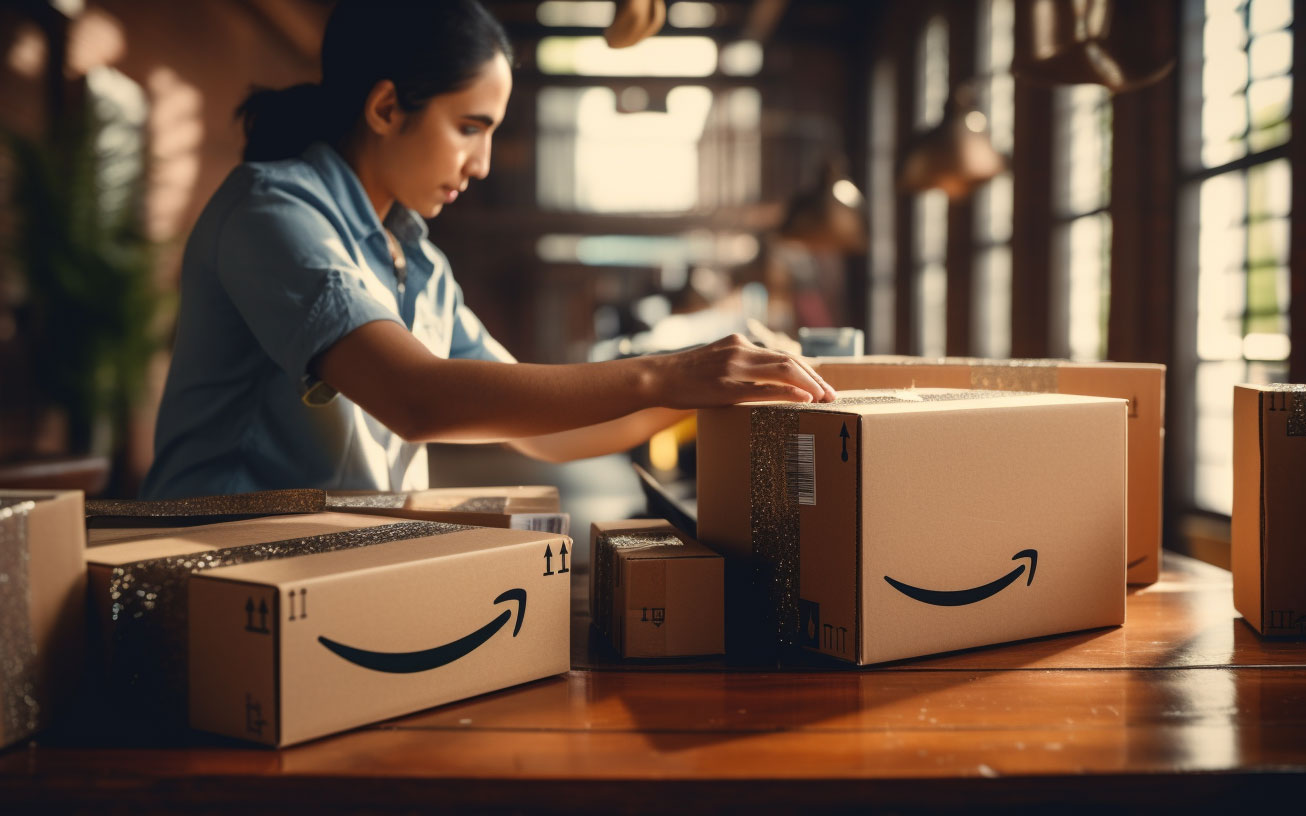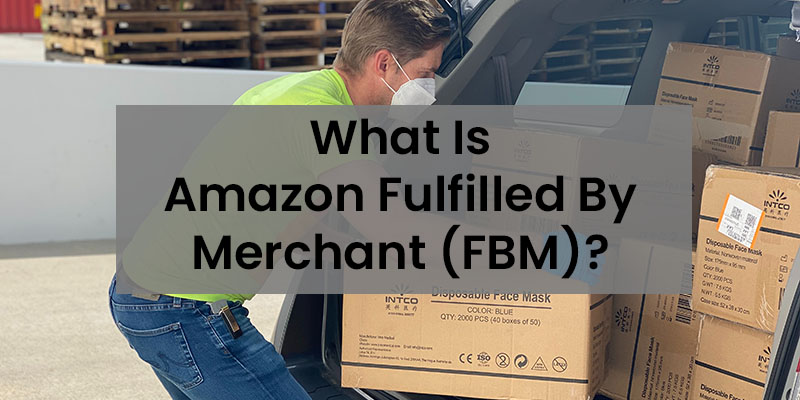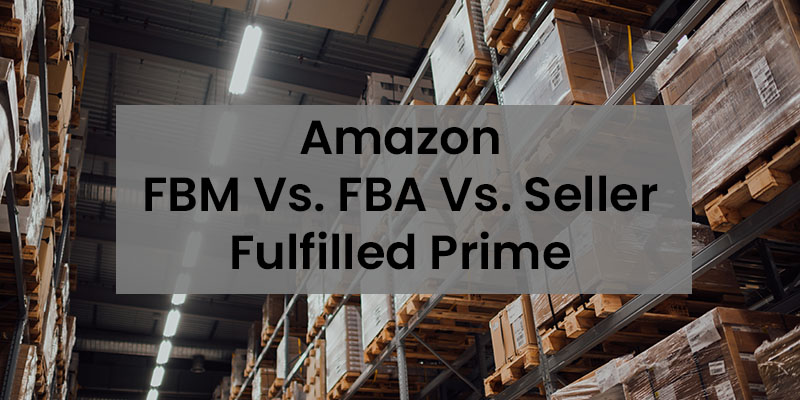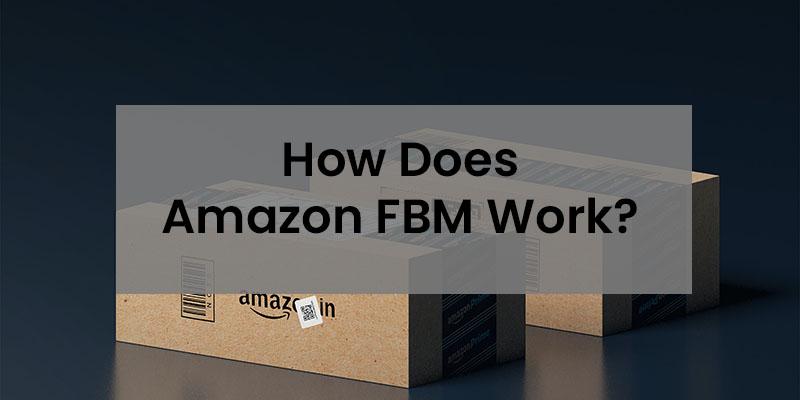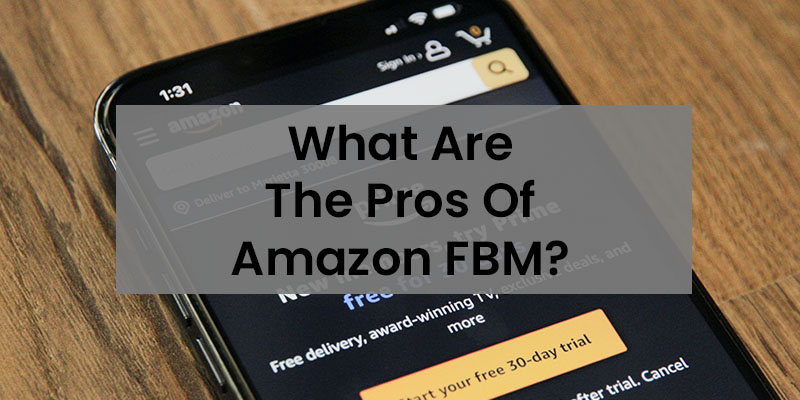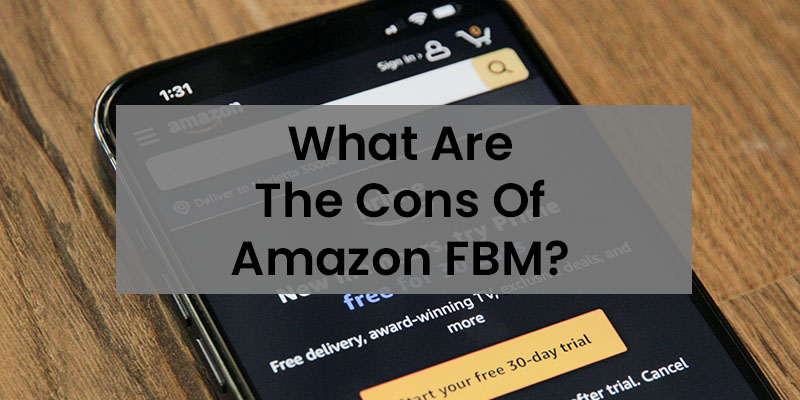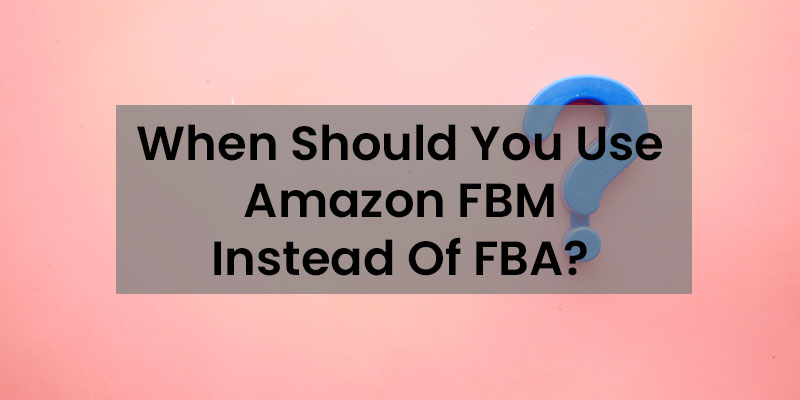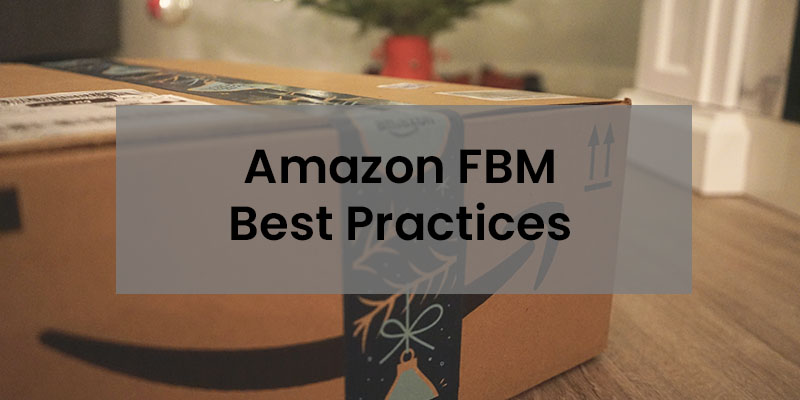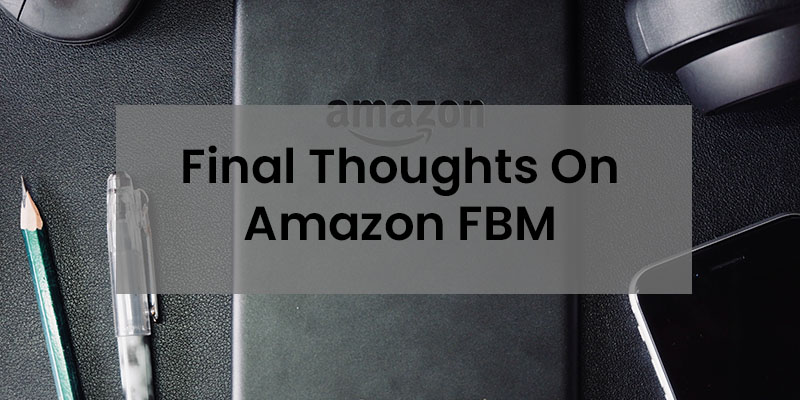Many Amazon sellers are considering switching from Amazon FBA to the Fulfilled By Merchant (FBM) program due to Amazon’s ever-increasing fulfillment prices and rule changes.
With FBM, you are responsible for fulfilling your own orders without any help from Amazon, but is this strategy cost-effective in the long run? Will selling on Amazon FBM affect your sales?
Both are valid questions that I’ll answer in this article. I’ll also share the pros and cons of Amazon FBM and explain how you can get started.
Note: Amazon often uses the term Merchant Fulfilled Network (MFN) interchangeably with FBM.
Are you interested in creating a strong, defensible brand for your products? If so, I put together a comprehensive package of resources that will help you launch your own online store from complete scratch. Be sure to grab it before you leave!
What Is Amazon Fulfilled By Merchant (FBM)?
Amazon Fulfilled By Merchant is a fulfillment method where you list your products on Amazon and handle your own storage, packing, shipping, and customer support.
You can handle fulfillment by running your own warehouse, or you can hire a third-party logistics company (3PL).
Since you’re responsible for everything, you have complete control over the fulfillment process. You also avoid paying Amazon’s FBA seller fees, which can be as high as 30% of your product price.
Amazon FBM Vs. FBA Vs. Seller Fulfilled Prime
There are three Amazon fulfillment methods: Fulfilled by Amazon (FBA), Fulfilled By Merchant (FBM), and Seller Fulfilled Prime (SFP).
If you use FBA, Amazon stores, packs, and ships orders on your behalf. They also handle returns and customer service, removing a lot of the work from the selling process.
However with Amazon FBM, the seller is responsible for fulfilling their own orders.
Unlike Amazon FBA, FBM products are not eligible to receive the Prime badge. Amazon Prime members can rely on free, same-day delivery for millions of products, depending on where they live, which greatly increases the conversion rate for your Amazon listings.
Seller Fulfilled Prime (SFP) is a third fulfillment program that acts as a middle ground between FBA and FBM. SFP allows you to fulfill your own orders while retaining Prime eligibility.
Like FBM, you can handle fulfillment or use a 3PL to help you out. Unfortunately, SFP is an exclusive program and not open to every seller. There’s a waiting list to join, and most sellers don’t qualify.
Even if you are invited into SFP, you must undergo a trial period where you’re expected to fulfill Prime orders with 99% on-time delivery and a cancellation rate of 1% or lower.
Amazon only provides your products with the Prime badge after you successfully complete the trial period.
The following table compares the three fulfillment platforms:
| FEATURE | FULFILLED BY MERCHANT (FBM) | FULFILLED BY AMAZON (FBA) | SELLER FULFILLED PRIME (SFP) |
| Prime eligibility | No | Yes | Yes |
| Storage | Amazon | Seller or 3PL | Seller or 3PL |
| Returns | Amazon | Seller handles returns but must follow the Amazon standards | Seller |
| Customer service | Amazon | Amazon | Seller |
| Shipping fees | Amazon handles shipping and bills the seller | Seller handles and pays for shipping | Seller handles and pays for shipping |
| Performance metrics | None | None | Seller must pass the trial period and remain eligible by hitting the strict metrics |
How Does Amazon FBM Work?
Amazon FBM puts the seller in charge of order fulfillment. Here’s a high-level overview of how FBM works:
- You sign up for a seller account on Amazon.
- You create an Amazon product listing or sell under an existing one.
- Customers order your products on Amazon.
- You pack and ship the products to your customers.
- You handle customer service and returns when they occur.
To start with FBM, you’ll need to create an account on Amazon. You can either sign up as an individual or as a professional seller. Individual sellers don’t pay a subscription fee, but Amazon charges a $0.99 fee for each item sold.
Professional sellers pay a subscription fee of $39.99 a month, but there are no per item selling fees. All sellers pay a commission, also known as a referral fee, on product sales.
Once you sign up for an Amazon seller account and submit the necessary documents, Amazon takes anywhere from a few minutes to a week to approve your account.
Once approved, you can create product listings and set the return policy for your products. Make sure you optimize your product listings to rank on Amazon.
Feel free to read my article on Amazon SEO to understand how the Amazon search algorithm works. It’ll help you rank higher in the search results and improve your conversion rate.
After your products go live, Amazon will notify you when you receive an order. At that stage, you can use either Amazon or your own shipping carrier to create shipping labels and ship your order.
In general, using an Amazon partner carrier will be the cheapest way to ship a package. If everything goes well, your customer will receive the product on time, and you’ll get your payment within 14 days.
If the customer requests a return, you must respond to their request within 24 hours and process the return order within 48 hours. If you fail to do so, Amazon may initiate a refund on your behalf and bill your seller account for the shipping fees.
You can read more on Amazon’s return policy to understand exactly how it works.
Amazon FBM Fees
Amazon FBM fees include a monthly subscription fee of $39.99 and an average referral fee of 15% if you are a professional seller.
If you’re selling books or other media items on Amazon, there’s an additional closing fee of $1.80 per item.
As an FBM seller, Amazon won’t charge you for storage, fulfillment, returns processing, long-term storage, or stock removal fees.
What Are The Pros Of Amazon FBM?
The main advantages of using Amazon FBM include greater control over the fulfillment process, no inbound shipping costs, increased margin, more brand-building opportunities, and fewer inventory management issues.
No Inbound Shipping Costs
With Amazon FBA, you may need to ship products to multiple fulfillment centers across the country instead of a single warehouse.
With Amazon FBM, you save on inbound shipping costs because you are shipping all of your products from your own warehouse.
Increased Margin
As an FBM seller, you do not have to pay Amazon’s fulfillment fees which average around 15%. You also avoid miscellaneous fees like long-term storage, disposal, and return fees.
With Amazon FBA, sellers must still pay the Amazon FBA and referral fees on returned products. And because Amazon makes it so convenient for customers to return products, their return rate is higher than many Amazon competitors.
Amazon also charges FBA sellers higher shipping rates for oversized items since Amazon always adds up to 1 lb in packing weight.
All of these fees are avoided by using FBM.
Better Branding
Amazon packs orders in their standard brown-colored Amazon cartons with lots of plastic. But with FBM, you can show off your brand to customers with your own custom packaging.
For example, if you have an eco-friendly brand, you can stay true to your brand values by using sustainable packaging.
Fewer Stock Issues
With FBA, Amazon limits the number of products you can store at Amazon fulfillment centers based on your sales volume and package size.
The restock limit was introduced in July 2020 during the pandemic. Initially, Amazon restricted stock quantities based on ASIN. But since April 2021, Amazon now employs storage limits based on product type.
Unfortunately, you cannot change Amazon’s restock limits. However with FBM, you have full control over your stock levels.
What Are The Cons Of Amazon FBM?
The main drawbacks of using Amazon FBM are that you can’t get the Prime badge, you’ll spend more time fulfilling orders and handling returns, and you’ll get fewer sales on Amazon.
No Prime Badge
FBM sellers don’t have access to the Prime badge, a visible marker that indicates a seller’s reliability and fast shipping. Without the Prime badge, it’s more difficult to win sales from Amazon’s best customers.
On average, Prime members spend $1400 a year versus non-Prime members who only spend $600.
You Must Store And Fulfill Orders
You are responsible for order fulfillment with Amazon FBM, which means that you’ll spend more time managing inventory and shipping rather than focusing on marketing, advertising, and brand development.
If you outsource the fulfillment process to a 3PL, it can be as costly as FBA, especially if you have a lot of inventory.
Handling Returns
As an FBM seller, you are responsible for returns and customer service. This can be a good thing as it helps you understand your customer’s pain points.
However, Amazon has a high return rate, so you may spend more time fulfilling orders and handling returns than focusing on growing your business.
Lower Conversion Rate
Many Amazon customers only shop for products with the Prime badge. As a result, FBM sellers often experience a 3X lower conversion rate compared to their FBA counterparts.
This is the primary disadvantage of using FBM vs. FBA.
When Should You Use Amazon FBM Instead Of FBA?
You should use Amazon FBM if your products are difficult to ship through FBA, or if it’s cheaper to fulfill orders yourself.
Shipping large or heavy items with FBA can be expensive. Similarly, Amazon charges long-term storage fees on products with slow turnover, including a storage fee of $2.40 per cubic foot for standard-size items from October to January.
If you can find a reliable 3PL with low fulfillment fees or if you find that Amazon’s strict restock limits are severely hampering your business, you may be better off with Amazon FBM.
Amazon FBM Best Practices
Here are some tips for using Fulfilled by Merchant on Amazon:
- Use Amazon’s ‘Buy Shipping’ feature: Amazon allows you to buy shipping labels individually and in bulk once you receive an order. After buying shipping labels using this feature, Amazon automatically confirms the order and sends the tracking number to your customer.
- Provide tracking numbers: If you’re shipping with your own carrier, update the tracking number as soon as you create a label.
- Ship on time: Amazon provides an estimated delivery date to visitors on the checkout page so that customers know when to expect the order. It’s best to ship products quickly so they arrive before the given date. You can change the handling and transit time through the “Shipping Settings.”
- Offer a flexible return policy: For a better customer experience, make sure your return instructions are clear and match or exceed Amazon’s return policies.
Final Thoughts On Amazon FBM
Amazon FBM can be a good alternative to FBA if it will result in higher profit margins. The challenge will be establishing a low-cost, efficient fulfillment system and selling your products at volume without the Prime badge.
If you choose Amazon FBA, make sure you have a backup plan to sell with FBM to protect your business from supply chain disruptions.

Ready To Get Serious About Starting An Online Business?
If you are really considering starting your own online business, then you have to check out my free mini course on How To Create A Niche Online Store In 5 Easy Steps.
In this 6 day mini course, I reveal the steps that my wife and I took to earn 100 thousand dollars in the span of just a year. Best of all, it's free and you'll receive weekly ecommerce tips and strategies!
Related Posts In Amazon Sales Strategies
- Amazon Liquidation – How To Get Rid Of Inventory That’s Not Selling
- How To Increase Your Amazon Sales Rank By 209% With A Simple Photo Tweak
- How To Make An Amazon Storefront
- How To Sell On Amazon Global In The UK, Canada, Europe, Japan
- How To Use Amazon Posts To Grow Your Sales

Steve Chou is a highly recognized influencer in the ecommerce space and has taught thousands of students how to effectively sell physical products online over at ProfitableOnlineStore.com.
His blog, MyWifeQuitHerJob.com, has been featured in Forbes, Inc, The New York Times, Entrepreneur and MSNBC.
He's also a contributing author for BigCommerce, Klaviyo, ManyChat, Printful, Privy, CXL, Ecommerce Fuel, GlockApps, Privy, Social Media Examiner, Web Designer Depot, Sumo and other leading business publications.
In addition, he runs a popular ecommerce podcast, My Wife Quit Her Job, which is a top 25 marketing show on all of Apple Podcasts.
To stay up to date with all of the latest ecommerce trends, Steve runs a 7 figure ecommerce store, BumblebeeLinens.com, with his wife and puts on an annual ecommerce conference called The Sellers Summit.
Steve carries both a bachelors and a masters degree in electrical engineering from Stanford University. Despite majoring in electrical engineering, he spent a good portion of his graduate education studying entrepreneurship and the mechanics of running small businesses.


